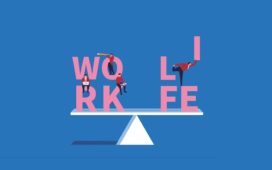Research analyst Rob Howe measured the surface area for transport modes within Manchester’s inner ring road.
Urbinfo
Motorists get the lion’s share of transport space in the English city of Manchester, yet they make only a small fraction of the daily journeys, a researcher has found. Claiming to show the inefficiency and inequality baked into mass motoring the property researcher worked out that the vast majority of people who travel into Manchester every day do not travel in cars yet motorists are gifted with the bulk of the city’s transport space.
“Roads and car parks take up a whopping 59% of total transport infrastructure surface area in Manchester,” says property analyst Ed Howe, but “only 13% of the daily journeys into and out of the city center are made by car.”
Howe has published his findings on the website for his property data business, UrbInfo.
“Motorist-friendly planning in central Manchester often comes at the expense of everyone else,” says Howe, who started his research after Manchester City Council said it was to develop a newly derelict plot of land into a car park.
The 4.2-hectare site on the edge of the city center is earmarked for redevelopment in association with Abu Dhabi United Group within the next five years but, in the meantime, the council is seeking planning permission–from itself–to use the plot as a 440-space car park.
“Many see this as a hypocritical move from the council just one day after officially declaring a climate emergency and promising to make Manchester a carbon-neutral city by 2038,” points out Howe.
Howe’s UrbInfo business collects data on the number of apartments, offices, and hotels being planned for cities such as Nottingham and Manchester. He then sells this aggregated data to third parties.
Modal share for commuters into and out of Manchester each day.
Urbinfo
With a degree in urban planning and an interest in sustainable modes of city transport, Howe wants cities to recognize that catering to cars is bad for business.
“Have we sacrificed some of the desirability and attractiveness of our city centers in order to make it easier for people to travel via the least efficient, most damaging mode of transport?” asks Howe.
To work out the space devoted to different modes of transport within Manchester’s inner ring road, Howes used Google MyMaps to plot the ground area of roads, rail stations, rail lines, car parks, bus stations, and protected cycleways.
“I put all of that info into a spreadsheet and then went online to find usage and passenger stats. It’s a simple calculation, dividing the area devoted to transport infrastructure by the number of passengers using it,” says Howe.
The results were stark: “Cars take up loads and loads of room,” says the Manchester-based analyst, “but cyclists, tram users, and others do not take up very much room at all.”
Their economic worth dwarfs that of motorists, but they get just a fraction of the city’s infrastructure.
38% of journeys into and out of Manchester are made by train, but train stations and lines only take up 19% of city center space. The Metrolink tram service carries 25% of daily commuters, yet takes up only 7% of space. Bus users make up 22% of commuters, but use only 15% of space.
“Each car driver requires 126sq ft to drive in, park their car for the day, and drive out of Manchester city center,” argues Howe.
“Bus users need just 19 sq.ft space, train users 13 sq.ft, tram users 8 sq.ft and cyclists a mere 5 sq.ft of space.”
Space required for different modes of transport. Spot the elephant in the room?
Urbinfo
Howe stresses that his calculations only include surface car parks.
“If my study had included all the floors of multi-story car parks, and underneath buildings, and had included all the various back streets in the city center which are open to cars the surface area figure for motorists would be even higher.”
Howe does not think Manchester is unique, and that other towns and cities are also devoting a disproportionate amount of infrastructure to the least space-efficient mode of transport and were they to carry out their own research they would discover similar lopsided economic findings.








